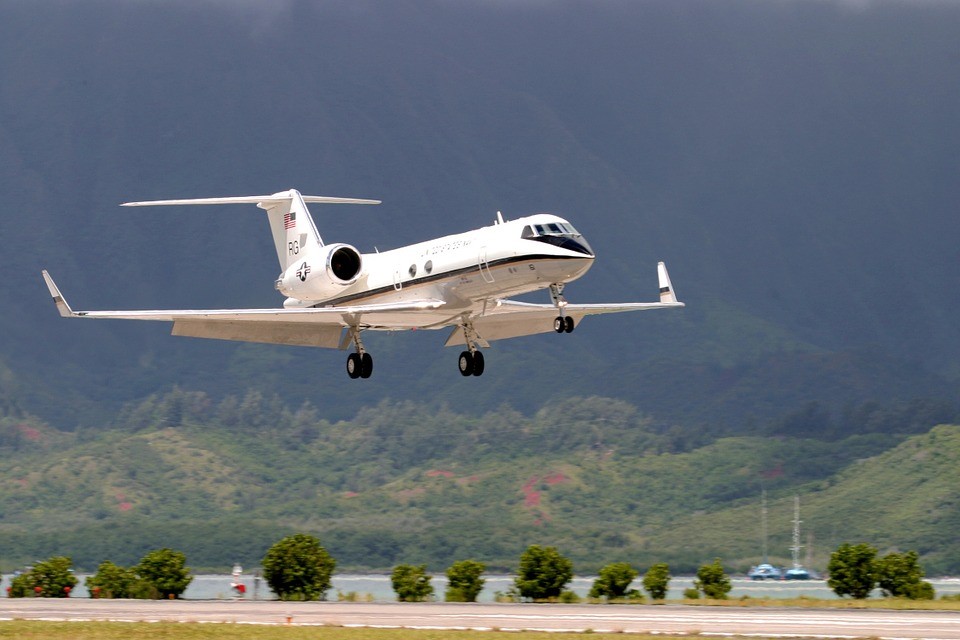Family Office
Family Offices Face Tricky Pre-Flight Checklist Over Private Jets - Citi Private Bank Study

The private bank takes a look at how family offices should consider their aviation needs, including the issues of pilot shortages, upgrades, and valuations of aircraft.
(An earlier version of this item appeared on Family Wealth Report, sister news service to this one. Given the international nature of aviation usage, it is obvious that this report, while originating from the US, is highly relevant for a family office where it be in London, Geneva, Singapore, Dubai or Australia. We hope readers find this useful. As always, feedback is appreciated.)
Family offices that own private jets or consider doing so have a severe pilot shortage but also the chance to buy aircraft at attractive valuations after prices have been squeezed over the past decade, a new Citi Private Bank study suggests.
The study, by Ford von Weise, head, global aircraft finance at the private bank, explores what family offices need to consider when using and purchasing private jets. The aviation sector has recovered to some extent from the crash of 2008 but some of the old boom times have yet to return, the report said.
“The list of severely impacted aircraft models is long,” the report said, picking the example of how from a high point in 2008, data shows that a 2006 model year Bombardier Global 5000 fell from $48 million to $13.5 million, slumping by 71.8 per cent in value over eight and a half years. The study also looks at the 2016 new aircraft delivery data from the General Aviation Manufacturer’s Association, showing new aircraft deliveries have fallen to their lowest level since 2004. On some measures, valuations of aircraft have never been so low, creating an opportunity to buy, the study said.
But while valuations may look tempting, a headache for family offices is a shallow pool of pilot talent, and the situation isn’t improving.
“Business aviation salaries have increased by 25 per cent in the last 18 to 24 months alone in the hiring of new crews. The number of applicants for every new available pilot position has dramatically decreased from about 50 - 70 to 6 – 15. The experience levels of pilots has noticeably decreased,” it said.
Then report also addresses the choices that private jet owners have in spending on upgrading the avionics – control/information systems – on aircraft; costs can vary significantly when shifting from analog to more fully digital technologies, such as those used to give aircrew flight data and navigation aids.
Older aircraft can be more expensive in some ways to upgrade, because more radical changes are required, the report said, noting that new regulations taking effect are forcing owners to upgrade.
“The question we get most often is: How much do these upgrades cost? The answer may be surprising - if you have an older aircraft with avionics that use picture tubes (TV cathode rays), the cost could be quite significant. For example, the cost to upgrade an older Gulfstream GIV-SP is well north of $1.2 million, according to Gulfstream. Depending on existing avionics, upgrading avionics to become compliant for aircraft less than 10 - 12 years old may cost as low as $100,000. The cost to upgrade newer aircraft is less, from $50,000 to $125,000 for much newer aircraft,” the report said.
Despite issues around pilot shortages and cost headaches, the report also strikes a cautiously optimistic note. “Despite the doom and gloom in the business aviation market, there may be light at the end of the tunnel, as recent data are indicating a potential market bottom. As of December 2017, the UBS Jet Index - an indicator of industry health – has shown its fifth straight monthly increase and is firmly above 50, a tipping point for a stable-to-improving market,” it said.
“This may reflect a greater willingness of dealers to increase pre-owned business jet inventory, lower inventory levels of pre-owned jets and improve customer interest. Customer interest and willingness scores are also now at new post-financial crisis highs,” it continued.
“Given the historically low aircraft values over the past five years, early indications provided by aircraft broker/dealers of values beginning to stabilise and ample aircraft availability as reported by JetNetiQ (NBAA, October 2017), the time may be right for some existing owners who have been considering transitioning to a different aircraft to contemplate upgrading. As values, based on historical trends, may begin to recover, it may be an opportunistic time to upgrade,” it added.
Suggestion
The report said that family offices wrestling with cost,
regulatory compliance and pilot availability problems should
consult industry groups for help. “Family office management
should consider reaching out to collaborative industry
associations, such as the National Business Aviation Association
(NBAA), the European Business Aviation Association (EBAA) or the
Asian Business Aviation Association (AsBAA) to understand
management best practices and how to integrate them successfully
into their organisation,” it said.
Citi Private Bank noted that for some years, the aviation role of family offices was mainly handled by each family’s chief pilot, but the increasing complexity and effort needed to run such operations could “quickly overwhelm even the most experienced of professional pilots”.
“This is hardly surprising, as typically family offices are staffed by former lawyers, bankers, investment professionals or accountants, not certified aviation managers. Most pilots are trained to have the background and experience to fly aircraft in an increasingly complex environment, not to manage people and processes while overseeing composite budgets, fleet forecasts and complicated aviation tax reporting, it said.